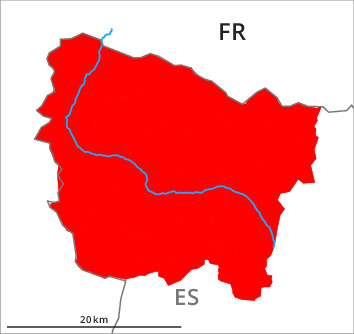
Danger level

Avalanche Problem

New snow



Wind-drifted snow

2000m


The snow sport conditions outside marked and open pistes in all altitude zones are very dangerous.
New snow and wind slabs are to be critically assessed.
A very large quantity of fresh snow and the many large wind slabs are very prone to triggering in all aspects and in all altitude zones. Avalanches can in many places be released by small loads or triggered naturally. Remotely triggered avalanches are possible. As a consequence of new snow and strong wind the already large wind slabs have increased in size additionally during the course of the night.
Gliding avalanches are also to be expected at any time. Sometimes these are medium-sized.
Backcountry touring and other off-piste activities call for very extensive experience in the assessment of avalanche danger and careful route selection.
Gliding avalanches are also to be expected at any time. Sometimes these are medium-sized.
Backcountry touring and other off-piste activities call for very extensive experience in the assessment of avalanche danger and careful route selection.
Snowpack
>40 to 50 cm of snow, and even more in some localities, has fallen since Saturday in all altitude zones. Up to 5 cm of snow will fall today. The strong wind has transported the new snow significantly. Large quantities of fresh snow and the wind-drifted snow are poorly bonded with the old snowpack in all aspects and in all altitude zones. Released avalanches and shooting cracks when stepping on the snowpack confirm poor snowpack stability.
Also shady slopes intermediate and high altitudes: Towards its base, the snowpack is weak. In these regions the avalanches can be released in deep layers of the snowpack and reach quite a large size.
In places that are protected from the wind a lot of snow is lying for the time of year in all altitude zones. In particular at high altitude snow depths vary greatly, depending on the infuence of the wind.
The weather report and anticipated change in the avalanche danger are uncertain. We recommend that you consult the most recent avalanche bulletin.
Also shady slopes intermediate and high altitudes: Towards its base, the snowpack is weak. In these regions the avalanches can be released in deep layers of the snowpack and reach quite a large size.
In places that are protected from the wind a lot of snow is lying for the time of year in all altitude zones. In particular at high altitude snow depths vary greatly, depending on the infuence of the wind.
The weather report and anticipated change in the avalanche danger are uncertain. We recommend that you consult the most recent avalanche bulletin.
Tendency
Slight decrease in danger of dry avalanches as the snowfall eases. Significant increase in danger of moist avalanches as a consequence of warming.